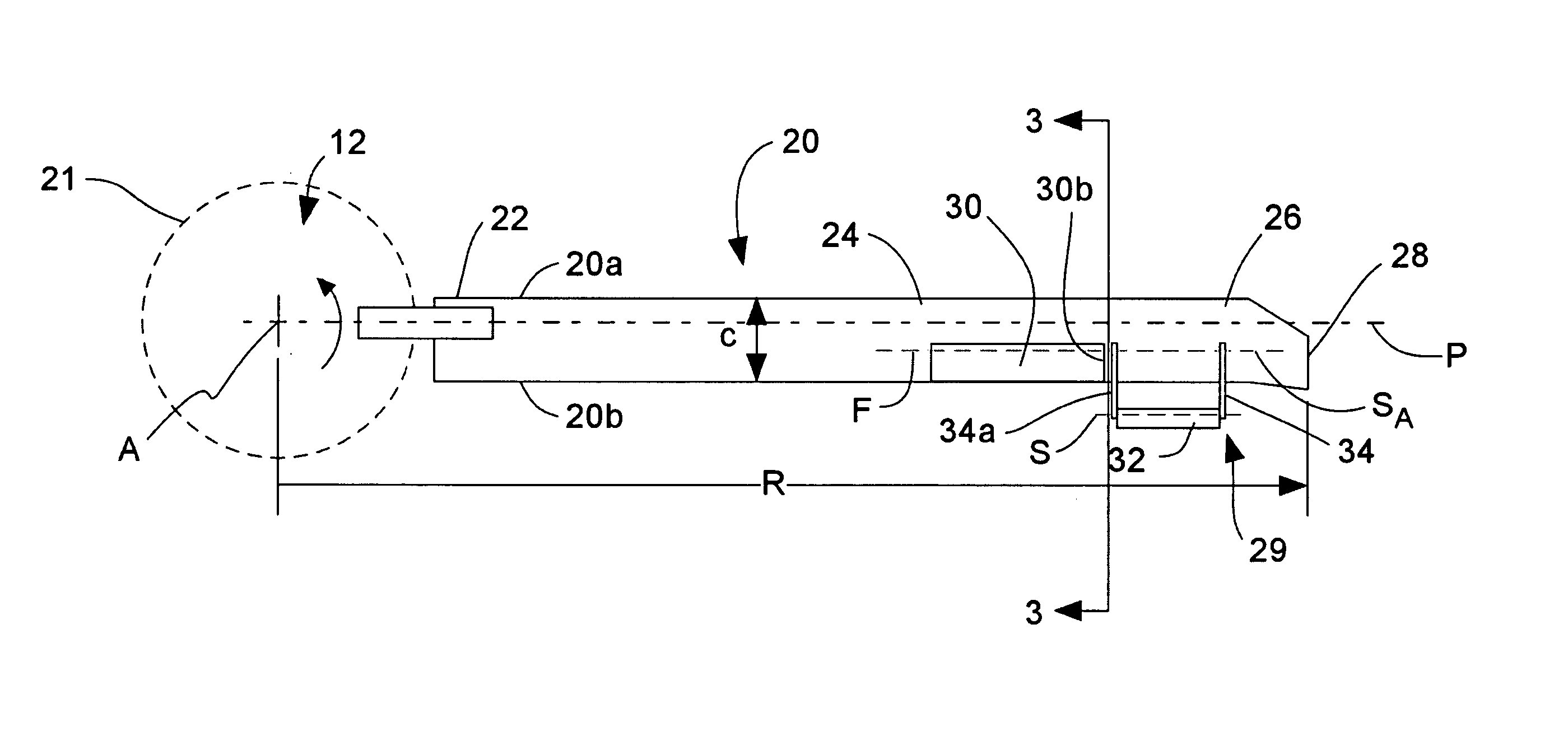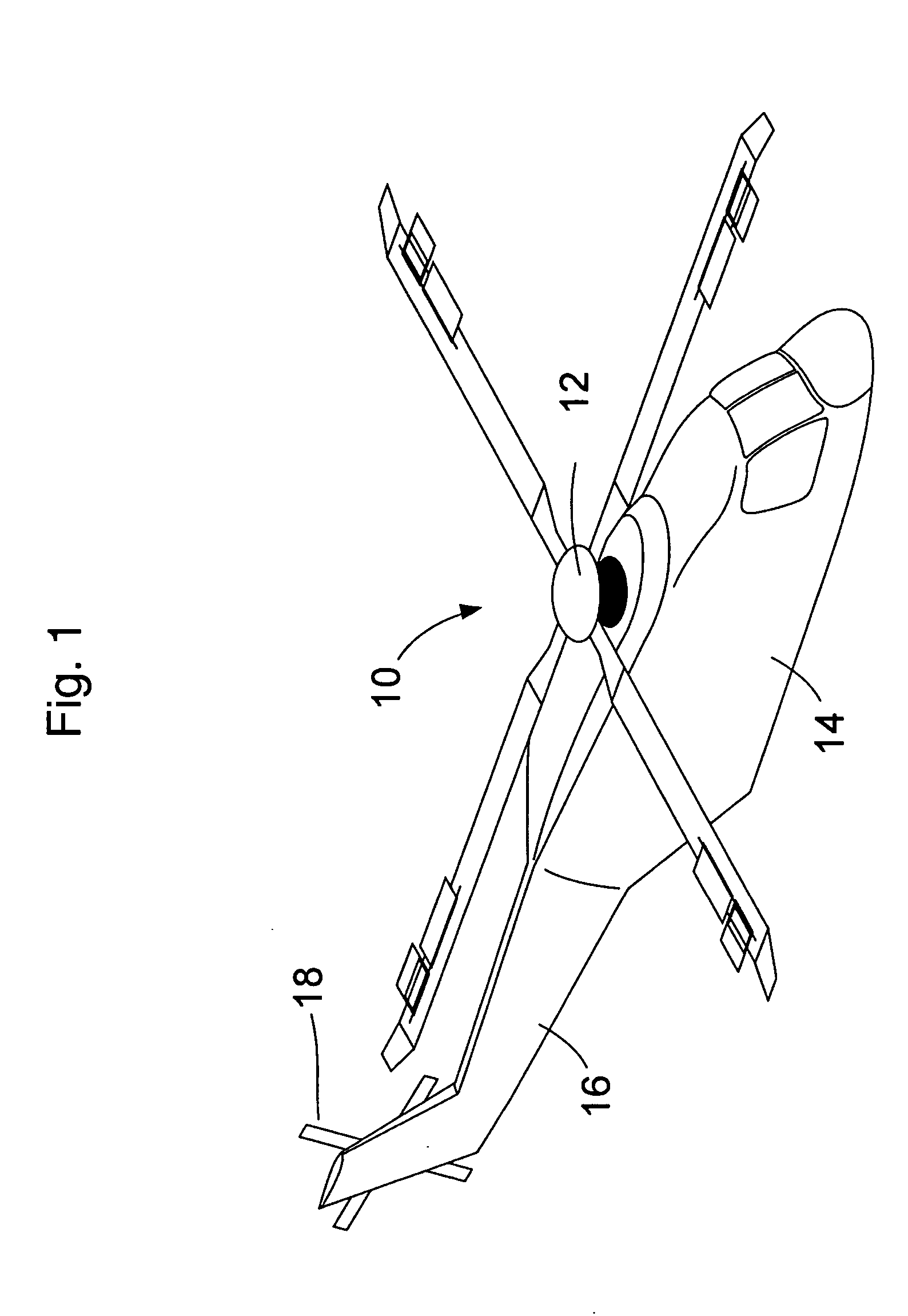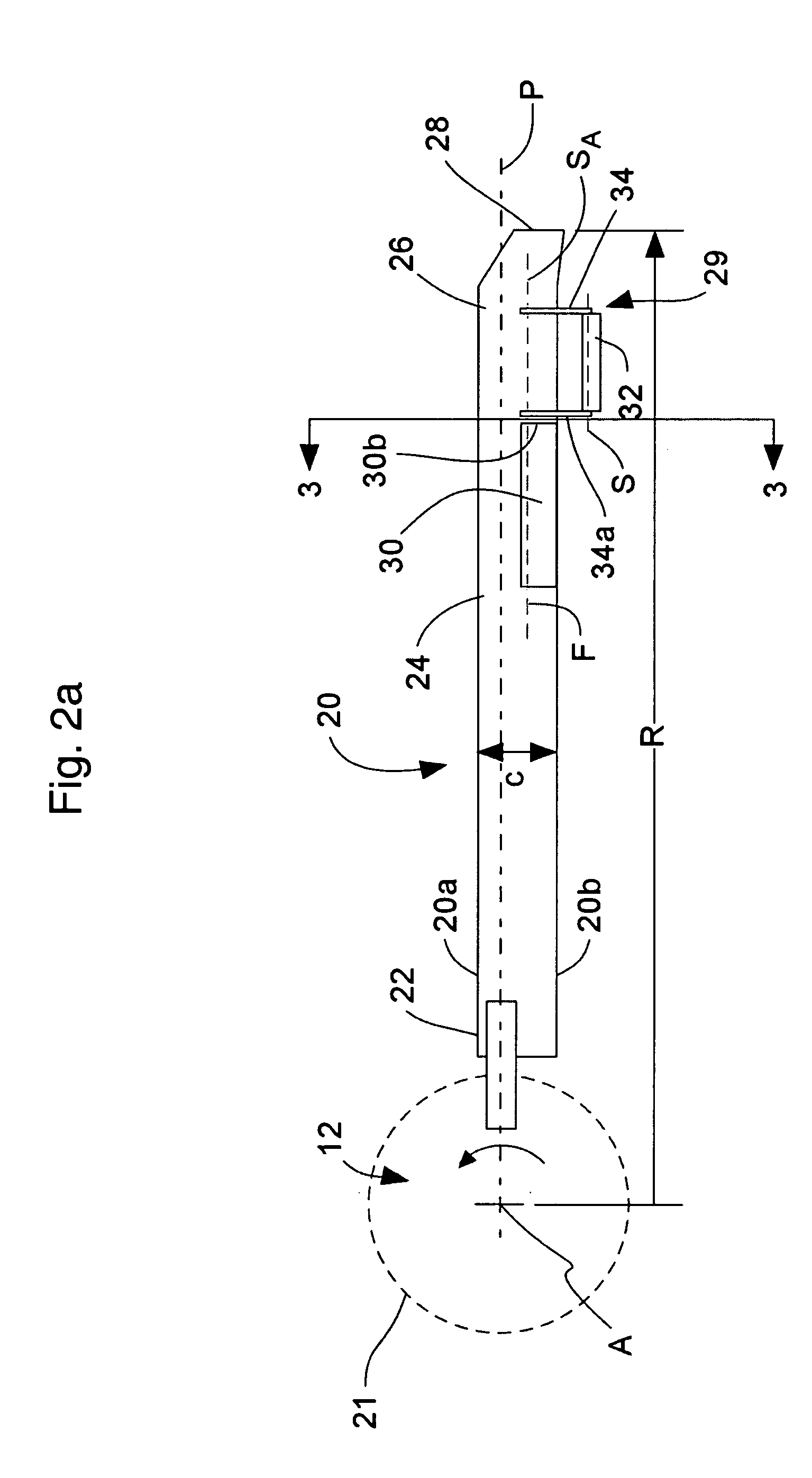Rotor blade pitch control assembly
a technology of rotor blades and assembly parts, applied in the direction of machines/engines, liquid fuel engines, transportation and packaging, etc., can solve the problems of affecting the performance of rotor blades, affecting the pitch of rotor blades, and requiring a relative large servo flap, etc., to achieve small forces and deflection, enhance rotor aerodynamic performance, and reduce vibration
- Summary
- Abstract
- Description
- Claims
- Application Information
AI Technical Summary
Benefits of technology
Problems solved by technology
Method used
Image
Examples
Embodiment Construction
[0019]FIG. 1 schematically illustrates a rotary wing aircraft 10 having a main rotor assembly 12. The aircraft 10 includes an airframe 14 having an extending tail 16 which mounts an anti-torque rotor 18. Although a particular helicopter configuration is illustrated in the disclosed embodiment, other configurations such as side-by-side, tilt rotor, coaxial, and tandem designs and configurations will also benefit from the present invention.
[0020] Referring to FIG. 2a, a rotor blade assembly 20 (only one illustrated) that is part of a rotor head assembly 12 includes an inboard section 22, an intermediate section 24, and an outboard section 26. The inboard, intermediate, and outboard sections 22, 24, 26 define the span of the main rotor blade 20. The blade sections 22, 24, 26 define a blade radius R between the axis of rotation A and a blade tip 28.
[0021] The blade root portion 22 is attached to the rotor assembly 12 for rotating the rotor blade 20 about the axis of rotation A. The ro...
PUM
 Login to View More
Login to View More Abstract
Description
Claims
Application Information
 Login to View More
Login to View More - R&D
- Intellectual Property
- Life Sciences
- Materials
- Tech Scout
- Unparalleled Data Quality
- Higher Quality Content
- 60% Fewer Hallucinations
Browse by: Latest US Patents, China's latest patents, Technical Efficacy Thesaurus, Application Domain, Technology Topic, Popular Technical Reports.
© 2025 PatSnap. All rights reserved.Legal|Privacy policy|Modern Slavery Act Transparency Statement|Sitemap|About US| Contact US: help@patsnap.com



